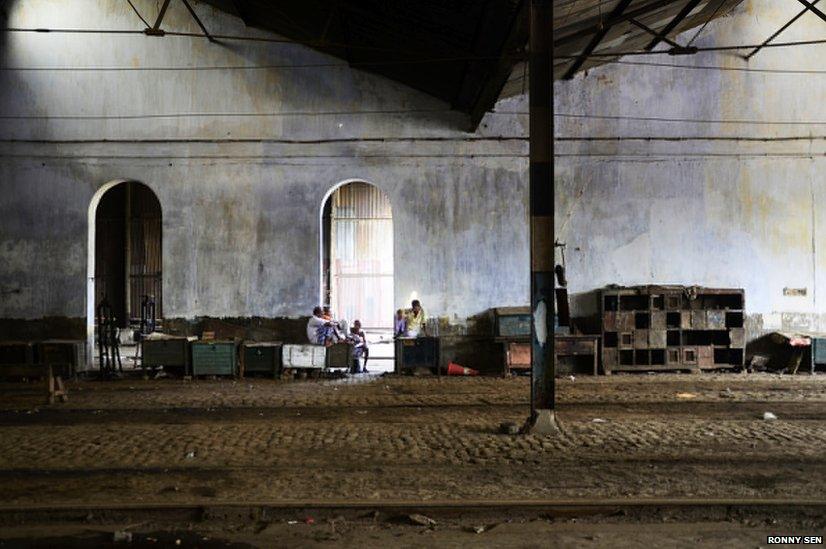In pictures: India's fading trams
- Published

Calcutta is the only city in India which still has trams. Over the past two decades, lack of investment, inadequate maintenance and a sharp fall in passengers have led to a decline in their status. Photographer Ronny Sen has been chronicling India's only remaining tramway.

The city's first tramcar rolled out on 24 February 1873. The 3.8km (2.4 miles) service from Sealdah and Armenian Ghat Street did not attract enough passengers and wound up in November of that year. In 1880, a longer, horse-drawn service was introduced. By the end of the 19th Century, the service owned 186 tramcars, 1,000 horses and 30km of track.

The tramway was electrified in 1900. By 1943, it was connected to the bustling suburb of Howrah and total track length reached 67km (42 miles). Today, the service has a fleet of more than 300 trams, but rolls out only some 170 trams a day because of low passenger numbers. Roads comprise only 6% of Calcutta's total area, forcing the trams to compete with many other types of vehicle.

A driver in his cabin in a Calcutta tramcar. The tram company has more than 6,000 employees and, according to reports, it sometimes finds it difficult to pay them on time because of financial pressures.

Over the years, the number of passengers has plummeted. In the early 1980s, an average of 275 tramcars would carry 750,000 passengers every day.

Today, about 170 tramcars carry some 160,000 passengers every day. "This is a sharp and progressive decline," says the Calcutta Tramways Company on its website. The 62-seater coaches are spacious and comfortable, and fares are cheap. But passengers are put off by slow speeds and long journey times.

Not surprisingly, the tram depots are desolate places. The company running the service has four depots and five terminals from where trams head out on 29 routes in the city.

Tram company employees and drivers outside a depot in the city. Over the years, a number of services, including the link to the suburbs of Howrah, have been shut down.

The trams run over 65km (40 miles) of double tracks. Many of the old tracks have been rebuilt and upgraded.

Suffering from crippling losses, the tramways company began running a bus service in 1992 with a fleet of 40 vehicles. In recent years, it has introduced modern-looking trams like this one, but passenger traffic continues to fall. Trams, says its website, have "managed to brave the odds and thrive" on Calcutta's roads. But the future of the 140-year-old service remains uncertain.